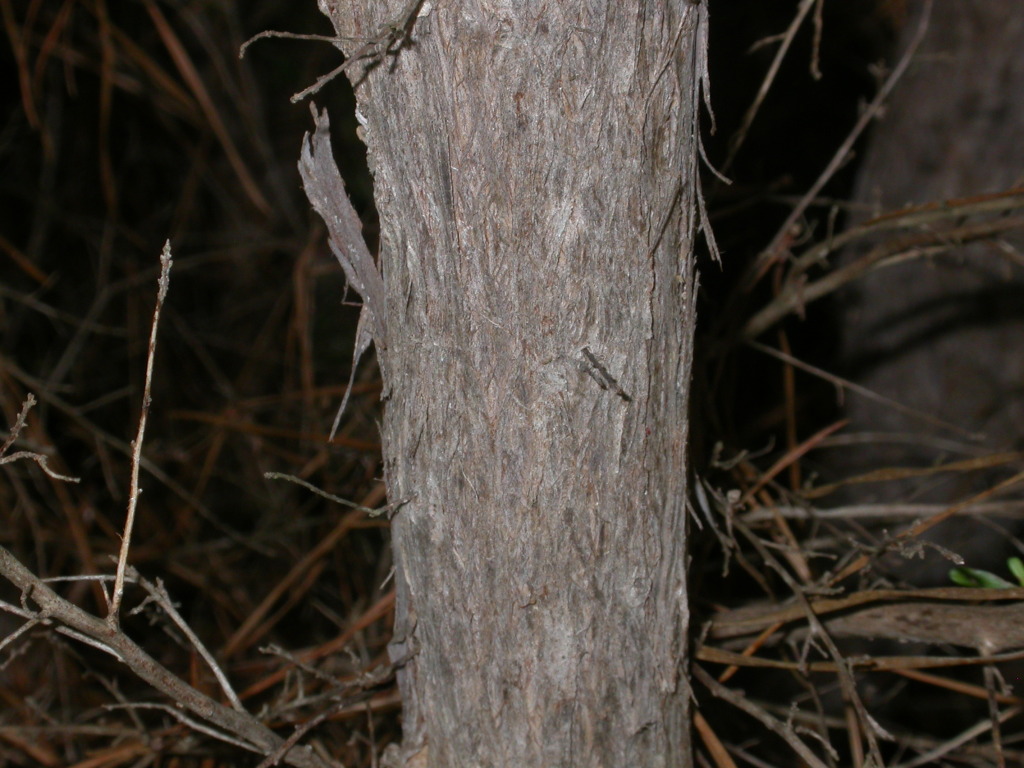Kunzea sp. (Upright form)
Forest BurganErect shrub or small tree 2–5 m high; bark on young stems fissured, peeling in long strips; young stems minutely pubescent. Leaves, alternate, oblanceolate to obovate, spreading, 7–20 mm long, 2–4 mm wide, glabrous to glabrescent, more or less flat; apex acute to acuminate; margins entire; petiole 0.5–1 mm long. Flowers white, crowded in upper leaf axils or on leafy side branches; pedicels 3–5 mm long, glabrescent or with short spreading to subappressed hairs; floral bracts absent; hypanthium glabrous or with sparse, short spreading to subappressed hairs, rugulose, 2.5–3 mm long; sepals green, reddish at base, triangular, 1–1.5 mm long; petals orbicular, c. 1.5–2.5 mm diam.; stamens white, 20–35, 1–4 mm long, those opposite sepals shorter than petals; style 1.5–2.5 mm long; ovary usually 3-celled. Fruit c. 3 mm long, 3–5 mm diam., not woody, dehiscent by terminal valves. Flowers Nov–Dec.(–Jan.)
GipP, CVU. Also NSW. Widespread in damp forest, from wet gullies or low-slopes in foothills to near coastal heathy woodlands, mainly in eastern and north-eastern Victoria, with a few collections from near Lorne. The precise natural range of this taxon in Victoria is unclear.
Kunzea leptospermoides, K. peduncularis, K. sp. (Scrubby form) and K. sp. (Upright form) were previously all included in K. ericoides (A.Rich.) Joy Thomps. Kunzea ericoides sensu stricto is now thought to be endemic to New Zealand. The distinction between these 4 Victorian taxa is often slight at best, and clear patterns between them are often blurred by the apparent widespread hybridisation in this complex. Inspection of bark and a sound knowledge of the range of variation seen in species is often required for identification. A full treatment of this species complex is still to be completed; as such the above description should be treated as interim. It is based on a very limited number of specimens selected largely by their distribution and presence of a few key features, and does not account for variation seen in putative hybrid forms. Of the five Victorian entities that were included in K. ericoides, K. sp. (Upright form) is one of the main taxa that can be dominant in some places, particularly in disturbed sites such as roadsides, sometimes forming extensive stands.
See notes under K. leptospermoides and K. sp. (Scrubby form).
 Spinning
Spinning